Covered Bridges across America
Covered bridges are not merely impressive structures—they are also time capsules that embody a distinct piece of American history and craftsmanship. Often nestled in picturesque locales, they evoke a sense of nostalgia and charm, captivating travelers with their rustic allure. Approximately 14,000 of these structures once stood across the United States, but only 500 to 600 remain today, dotting the landscape from the rolling hills in the east to the sun-kissed shores of the west. Here’s a closer look at seven of the most prominent, each with its own story to tell.
Newfield Covered Bridge
(Newfield, New York)
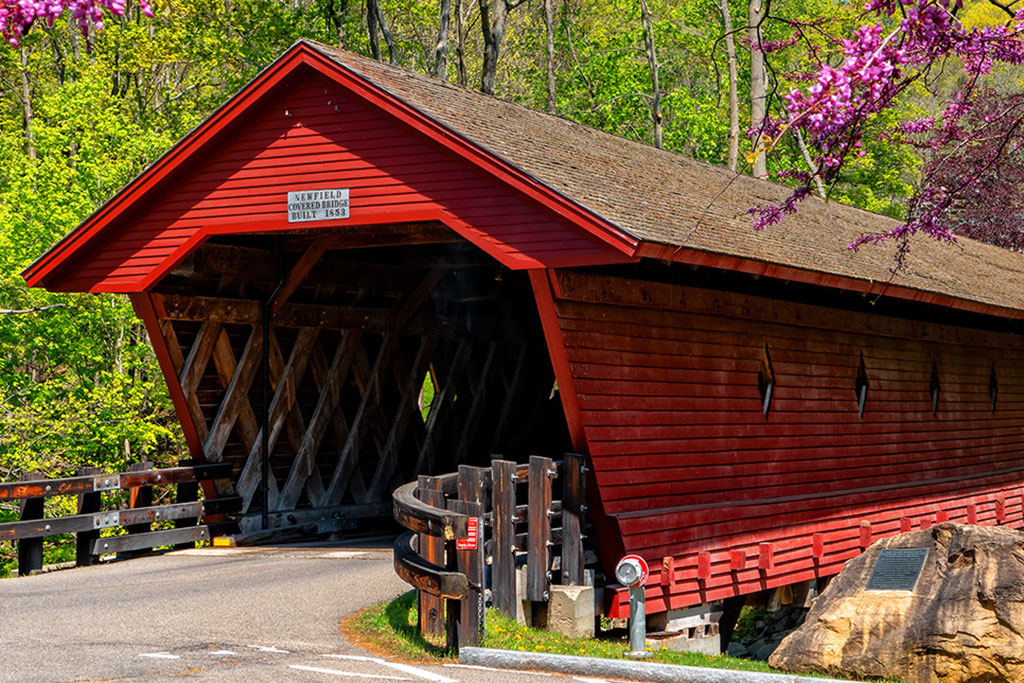
Built in 1853, this landmark near Ithaca is the oldest functional covered bridge in the state. Crossing over Cayuga Creek, it originally cost an estimated $800 to build and has since undergone a complete restoration, which, among other improvements, raised it one foot and replaced the trunnels (wooden pegs used to connect pieces of wood) to strengthen it. Backdropped against stunning foliage, Newfield’s weathered planks and red facade are certainly a sight to behold.
Campbell’s Covered Bridge
(Landrum, South Carolina)
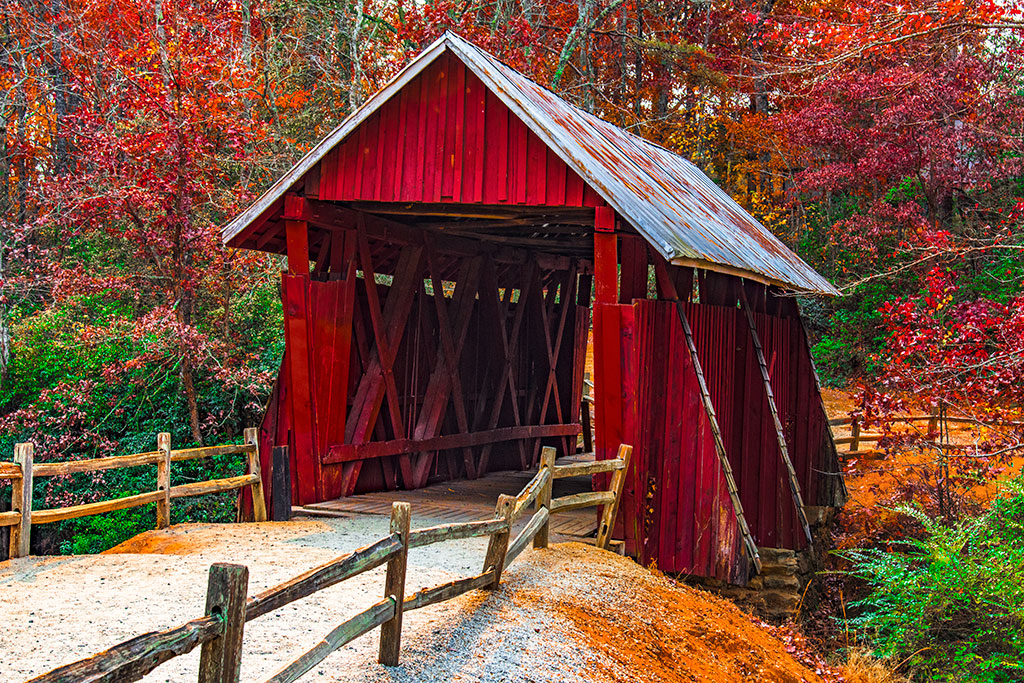
Greenville County in northern South Carolina used to be home to four covered bridges, but only one remains today—in fact, Campbell’s Covered Bridge is the last one left in the entire state. Spanning the tranquil waters of Beaverdam Creek, it offers a beautiful gateway to the rural landscape, giving travelers who pass through an up close look at the giant X-shaped support beams emblematic of the Howe truss bridge design. With its historic markers and pastoral tranquility, Campbell’s is certainly a beloved symbol of the Palmetto State’s enduring heritage.
Horton Mill Covered Bridge
(Oneonta, Alabama)
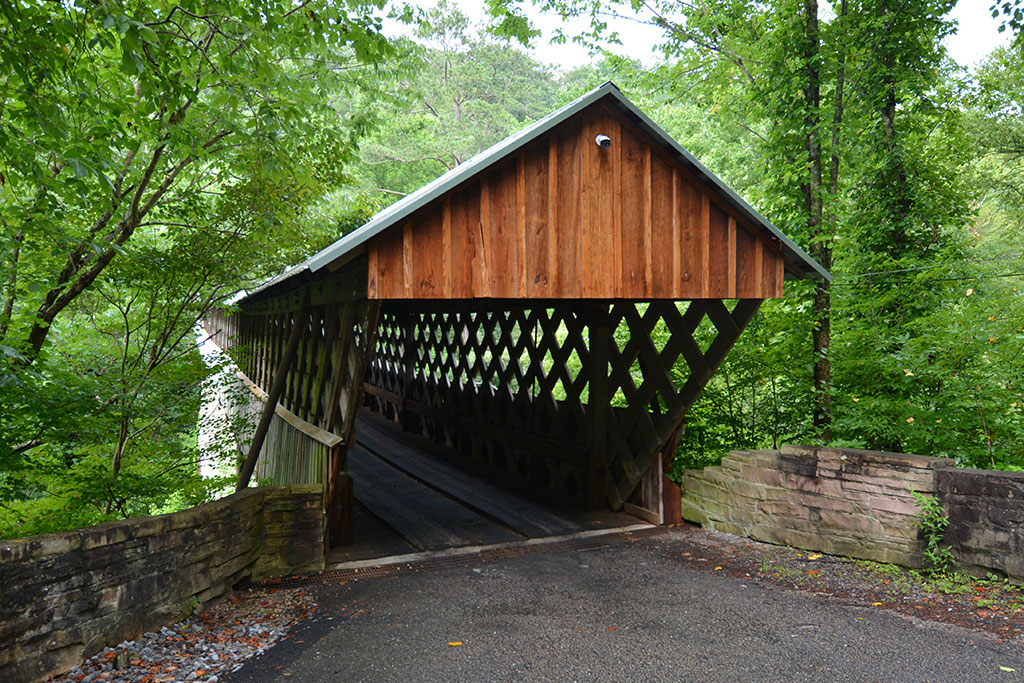
Measuring 70 feet above the water, this Alabama bridge is one of the highest across a waterway in the United States. Though it closed to automobiles in 2022, pedestrians are still more than welcome to meander down its lengthy stretch; a walk across its creaking planks is guaranteed to bring beautiful sights that photographers and nature lovers alike will appreciate. Better yet, Horton Mill is one of three covered bridges in Blount County, giving you a prime opportunity to explore multiple historic landmarks in the span of a day.
Horton Covered Bridge
(South Range, Wisconsin)

In 1897, builder Charles Horton obtained a construction patent for a design that minimized the need for rivets and bolts, allowing bridges to be constructed without expensive machinery. One example of his revolutionary method is nestled in Amnicon Falls State Park in northwest Wisconsin, less than thirty minutes from the coast of Lake Superior. It was originally built in another location and without a roof, only obtaining a covering after being moved to the park in 1939. Today, Horton continues to be a cherished landmark not only for its architectural significance but also for its scenic beauty, giving visitors stunning views of waterfalls along with potential glimpses of beavers, otters, and other wildlife bustling below.
Hogback Covered Bridge
(Winterset, Iowa)
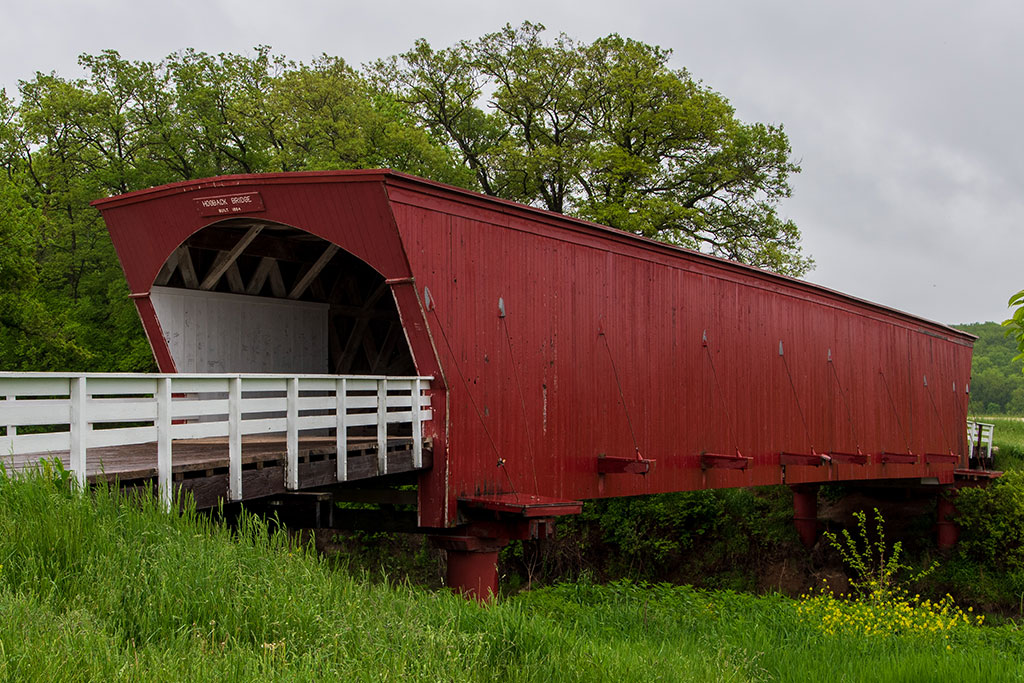
Iowa’s Madison County is home to all the state’s remaining covered bridges, with the crown jewel arguably being Hogback in Winterset. Named after a nearby limestone ridge, the bridge was constructed using a Town lattice truss design, which involves crossing wooden planks and beams diagonally. Over the years, it has faced an array of challenges, including floods, fires, collisions, and neglect, and still it has outlasted the hundred or so other covered bridges that once stood in Iowa. It was restored in 1992 for a total of $118,810 to help preserve it and ensure that travelers can continue to enjoy it for generations to come.
Gore Creek Covered Bridge
(Vail, Colorado)
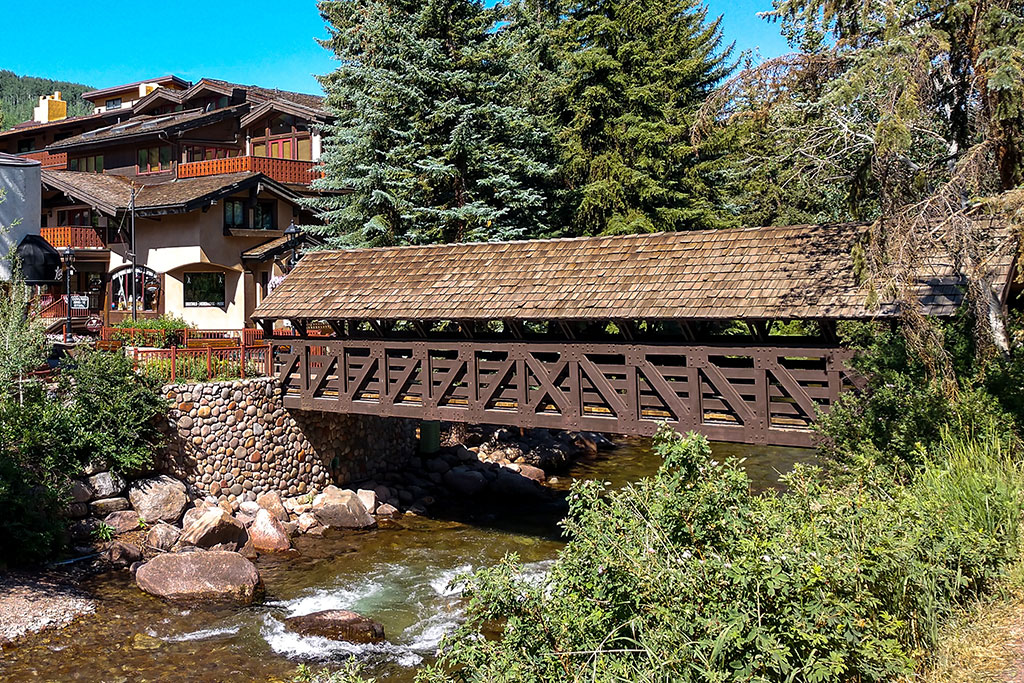
Tucked within the majestic beauty of Colorado’s Rocky Mountains, this covered bridge spans the pristine waters of Gore Creek, lending a scenic entrance into the charming Vail Village. It was first constructed uncovered, only gaining a roof in 1965 when Vermont natives John and Cissy Dobson moved to town and offered to cover half the cost. With its picturesque surroundings, the covered bridge quickly added extra charm and whimsy to the village and became an emblem of the region’s natural splendor, whether framed by vibrant autumn foliage or blanketed in a layer of winter snow.
Bridgeport Covered Bridge
(Penn Valley, California)
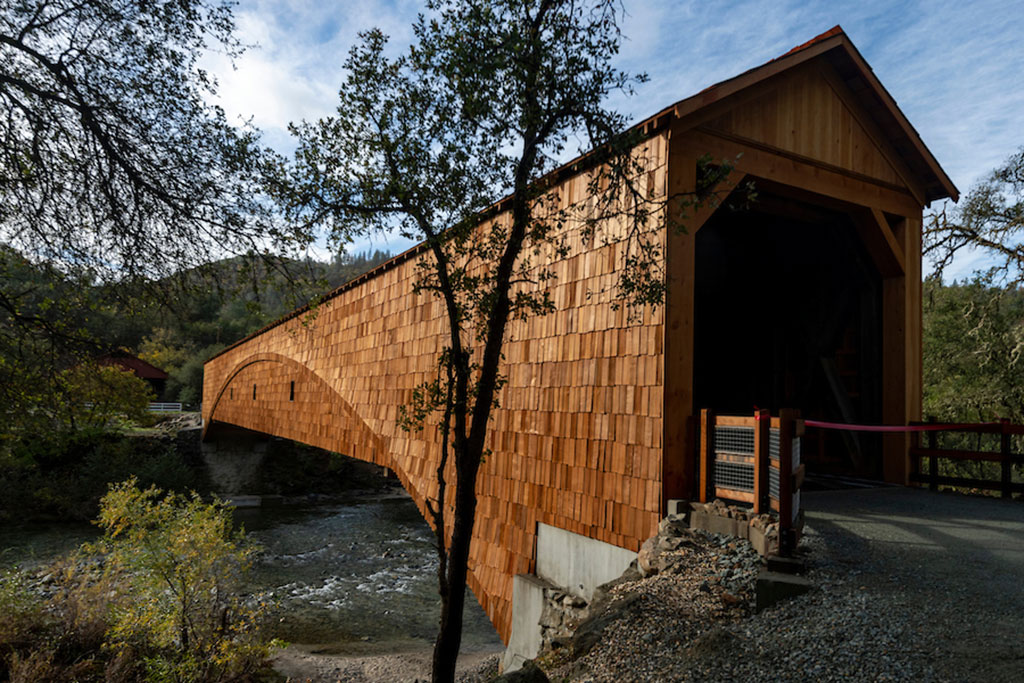
What sets this bridge apart is not just its enchanting setting but also its significance as the longest single-span covered bridge in the United States, standing at 233 feet long. Originally built in 1862, it is an iconic attraction within the South Yuba River State Park in Nevada County, California. It was closed in 2011 after a survey revealed that a flood had caused significant damage to the structure, but with the help of the Save Our Bridge Campaign Committee, it was restored beginning in 2019 and reopened to the public in 2021. The beloved landmark continues to draw visitors to the park as they seek to bask in its timeless charm.
Covered bridges are a testament to a bygone era, a time of exceptional craftsmanship and ingenuity. While their numbers have dwindled, the remaining ones serve as open-air museums, bringing pockets of charm and nostalgia to travelers across the nation.



